 |
 |
Our enthusiastic and extremely knowledgeable perennials team is here to answer your questions and help you choose the best perennials for your situation. There’s always something in bloom for sun, shade, butterflies, birds or deer resistance as well as a variety of bulbs for your space.
Stroll through our time-tested favorites and introduce yourself to the newest varieties. We garden with perennials too; we love them and it shows!
|
288 found, showing page 5 of 20
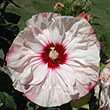
Striking variety with white, ruffled flowers that are accented with red and fuschia margins. USDA 4-9
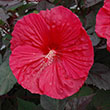
Vivid, magenta blooms in the summer. Dark, purple-tinged foliage accents bright flowers. USDA 4-9

Attractive verigated grass-like foliage and large, spectacular pale blue blooms. USDA 4-9
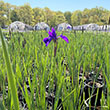
Purple flowers bloom above the narrow green leaves. Naturalizing. USDA 3-8
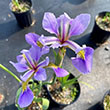
Purple-blue blooms. Tolerates standing water. Native. USDA 3-9
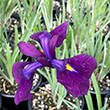
Purple blooms. Variegated foliage. Tolerates wet conditions. USDA 4-9
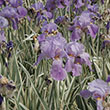
Pale blue blooms. Fragrant. Cream & green variegated foliage. USDA 4-9
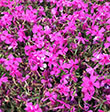
Height: 5 inches
Spacing: 15 inches
Sunlight: full sun, partial shade
Hardiness Zone: 2a
Other Names: Drummond Pink Phlox, Creeping Phlox
Description:
This variety produces a dazzling display of large, hot pink flowers that blanket the plant in spring; prune lightly after flowering to encourage a dense growth habit; wonderful for rock gardens, edging, or in mixed containers
Ornamental Features:
Drummond's Pink Moss Phlox is smothered in stunning hot pink star-shaped flowers at the ends of the stems from early to late spring. Its tiny needle-like leaves remain forest green in color throughout the year.
Landscape Attributes:
Drummond's Pink Moss Phlox is a dense herbaceous evergreen perennial with a ground-hugging habit of growth. It brings an extremely fine and delicate texture to the garden composition and should be used to full effect.
This plant will require occasional maintenance and upkeep, and should only be pruned after flowering to avoid removing any of the current season's flowers. It is a good choice for attracting bees, butterflies and hummingbirds to your yard, but is not particularly attractive to deer who tend to leave it alone in favor of tastier treats. Gardeners should be aware of the following characteristic(s) that may warrant special consideration:
- Spreading
Drummond's Pink Moss Phlox is recommended for the following landscape applications:
- Mass Planting
- Rock/Alpine Gardens
- Border Edging
- General Garden Use
- Groundcover
Planting & Growing:
Drummond's Pink Moss Phlox will grow to be only 4 inches tall at maturity, with a spread of 18 inches. When grown in masses or used as a bedding plant, individual plants should be spaced approximately 15 inches apart. Its foliage tends to remain low and dense right to the ground. It grows at a medium rate, and under ideal conditions can be expected to live for approximately 10 years. As an evegreen perennial, this plant will typically keep its form and foliage year-round.
This plant does best in full sun to partial shade. It prefers dry to average moisture levels with very well-drained soil, and will often die in standing water. It is considered to be drought-tolerant, and thus makes an ideal choice for a low-water garden or xeriscape application. It is not particular as to soil type, but has a definite preference for alkaline soils. It is highly tolerant of urban pollution and will even thrive in inner city environments. Consider covering it with a thick layer of mulch in winter to protect it in exposed locations or colder microclimates. This is a selection of a native North American species. It can be propagated by division; however, as a cultivated variety, be aware that it may be subject to certain restrictions or prohibitions on propagation.
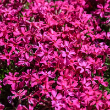
Height: 6 inches
Spacing: 15 inches
Sunlight: full sun, partial shade
Hardiness Zone: 2a
Other Names: Creeping Phlox
Ornamental Features:
Scarlet Flame Moss Phlox is smothered in stunning lightly-scented scarlet star-shaped flowers at the ends of the stems from early to late spring. Its tiny needle-like leaves remain green in color throughout the year.
Landscape Attributes:
Scarlet Flame Moss Phlox is a dense herbaceous evergreen perennial with a ground-hugging habit of growth. It brings an extremely fine and delicate texture to the garden composition and should be used to full effect.
This plant will require occasional maintenance and upkeep, and should only be pruned after flowering to avoid removing any of the current season's flowers. Deer don't particularly care for this plant and will usually leave it alone in favor of tastier treats. Gardeners should be aware of the following characteristic(s) that may warrant special consideration:
- Spreading
Scarlet Flame Moss Phlox is recommended for the following landscape applications:
- Mass Planting
- Rock/Alpine Gardens
- Border Edging
- General Garden Use
- Groundcover
Planting & Growing:
Scarlet Flame Moss Phlox will grow to be only 6 inches tall at maturity, with a spread of 18 inches. When grown in masses or used as a bedding plant, individual plants should be spaced approximately 15 inches apart. Its foliage tends to remain low and dense right to the ground. It grows at a medium rate, and under ideal conditions can be expected to live for approximately 10 years. As an evegreen perennial, this plant will typically keep its form and foliage year-round.
This plant does best in full sun to partial shade. It prefers dry to average moisture levels with very well-drained soil, and will often die in standing water. It is considered to be drought-tolerant, and thus makes an ideal choice for a low-water garden or xeriscape application. It is not particular as to soil type, but has a definite preference for alkaline soils. It is highly tolerant of urban pollution and will even thrive in inner city environments. Consider covering it with a thick layer of mulch in winter to protect it in exposed locations or colder microclimates. This is a selection of a native North American species. It can be propagated by division; however, as a cultivated variety, be aware that it may be subject to certain restrictions or prohibitions on propagation.
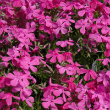
Deep pink blooms. Evergreen groundcover. Native. USDA 3-8
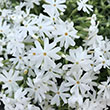
Plant Height: 4 inches
Flower Height: 6 inches
Spacing: 15 inches
Sunlight: full sun, partial shade
Hardiness Zone: 2a
Other Names: Creeping Phlox
Description:
This variety produces a showy carpet of bright white flowers shining in the spring sun; prune lightly after flowering to encourage a dense growth habit; wonderful for rock gardens, edging, or in mixed containers
Ornamental Features:
Snowflake Phlox is smothered in stunning white star-shaped flowers with buttery yellow eyes at the ends of the stems in late spring. Its tiny needle-like leaves remain forest green in color throughout the year.
Landscape Attributes:
Snowflake Phlox is a dense herbaceous evergreen perennial with a ground-hugging habit of growth. It brings an extremely fine and delicate texture to the garden composition and should be used to full effect.
This plant will require occasional maintenance and upkeep, and should only be pruned after flowering to avoid removing any of the current season's flowers. Deer don't particularly care for this plant and will usually leave it alone in favor of tastier treats. Gardeners should be aware of the following characteristic(s) that may warrant special consideration:
- Spreading
Snowflake Phlox is recommended for the following landscape applications:
- Mass Planting
- Rock/Alpine Gardens
- Border Edging
- General Garden Use
- Groundcover
Planting & Growing:
Snowflake Phlox will grow to be only 4 inches tall at maturity extending to 6 inches tall with the flowers, with a spread of 18 inches. When grown in masses or used as a bedding plant, individual plants should be spaced approximately 15 inches apart. Its foliage tends to remain low and dense right to the ground. It grows at a medium rate, and under ideal conditions can be expected to live for approximately 10 years. As an evegreen perennial, this plant will typically keep its form and foliage year-round.
This plant does best in full sun to partial shade. It prefers dry to average moisture levels with very well-drained soil, and will often die in standing water. It is considered to be drought-tolerant, and thus makes an ideal choice for a low-water garden or xeriscape application. It is not particular as to soil type, but has a definite preference for alkaline soils. It is highly tolerant of urban pollution and will even thrive in inner city environments. Consider covering it with a thick layer of mulch in winter to protect it in exposed locations or colder microclimates. This is a selection of a native North American species. It can be propagated by division; however, as a cultivated variety, be aware that it may be subject to certain restrictions or prohibitions on propagation.
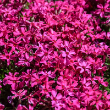
Vibrant reddish pink blooms. Evergreen. Groundcover. Native. USDA 2-9
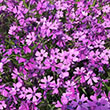
Fragrant purple blooms. Evergreen. Groundcover. Native. USDA 2-9
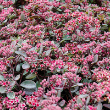
Plant Height: 6 inches
Flower Height: 10 inches
Spacing: 12 inches
Sunlight: full sun, partial shade
Hardiness Zone: 2b
Other Names: Autumn Stonecrop, Showy Stonecrop
Description:
A stunningly attractive perennial for hot, dry locations, featuring succulent bluish-green foliage and dark purple stems all season long, with showy pink flowers in late summer; a compact variety of stonecrop that also boasts excellent fall color
Ornamental Features:
Vera Jameson Stonecrop has masses of beautiful clusters of rose flowers at the ends of the stems from late summer to late fall, which emerge from distinctive coral-pink flower buds, and which are most effective when planted in groupings. The flowers are excellent for cutting. Its attractive succulent round leaves are bluish-green in color. As an added bonus, the foliage turns a gorgeous burgundy in the fall. The deep purple stems are very colorful and add to the overall interest of the plant.
Landscape Attributes:
Vera Jameson Stonecrop is a dense herbaceous perennial with an upright spreading habit of growth. Its medium texture blends into the garden, but can always be balanced by a couple of finer or coarser plants for an effective composition.
This is a relatively low maintenance plant, and is best cleaned up in early spring before it resumes active growth for the season. It is a good choice for attracting bees and butterflies to your yard, but is not particularly attractive to deer who tend to leave it alone in favor of tastier treats. It has no significant negative characteristics.
Vera Jameson Stonecrop is recommended for the following landscape applications:
- Mass Planting
- Rock/Alpine Gardens
- Border Edging
- General Garden Use
- Groundcover
- Container Planting
Planting & Growing:
Vera Jameson Stonecrop will grow to be only 6 inches tall at maturity extending to 10 inches tall with the flowers, with a spread of 15 inches. When grown in masses or used as a bedding plant, individual plants should be spaced approximately 12 inches apart. Its foliage tends to remain low and dense right to the ground. It grows at a fast rate, and under ideal conditions can be expected to live for approximately 15 years. As an herbaceous perennial, this plant will usually die back to the crown each winter, and will regrow from the base each spring. Be careful not to disturb the crown in late winter when it may not be readily seen!
This plant does best in full sun to partial shade. It is very adaptable to both dry and moist growing conditions, but will not tolerate any standing water. It is considered to be drought-tolerant, and thus makes an ideal choice for a low-water garden or xeriscape application. It is not particular as to soil pH, but grows best in poor soils, and is able to handle environmental salt. It is highly tolerant of urban pollution and will even thrive in inner city environments. This particular variety is an interspecific hybrid. It can be propagated by division; however, as a cultivated variety, be aware that it may be subject to certain restrictions or prohibitions on propagation.
Vera Jameson Stonecrop is a fine choice for the garden, but it is also a good selection for planting in outdoor pots and containers. It is often used as a 'filler' in the 'spiller-thriller-filler' container combination, providing a mass of flowers and foliage against which the larger thriller plants stand out. Note that when growing plants in outdoor containers and baskets, they may require more frequent waterings than they would in the yard or garden.
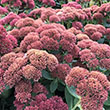
Height: 24 inches
Spacing: 18 inches
Sunlight: full sun, partial shade
Hardiness Zone: 2b
Other Names: Autumn Stonecrop, Showy Stonecrop
Description:
A highly desirable and popular groundcover, forming a dense mound completely covered in broccoli-like salmon-pink flowers which fade to red in early fall, succulent dusty-green foliage is prominent the rest of the season; needs a dry and sunny location
Ornamental Features:
Autumn Joy Stonecrop has masses of beautiful clusters of pink flowers at the ends of the stems from late summer to late fall, which emerge from distinctive coral-pink flower buds, and which are most effective when planted in groupings. The flowers are excellent for cutting. Its large succulent round leaves remain grayish green in color throughout the season.
Landscape Attributes:
Autumn Joy Stonecrop is a dense herbaceous perennial with an upright spreading habit of growth. Its relatively coarse texture can be used to stand it apart from other garden plants with finer foliage.
This is a relatively low maintenance plant, and is best cleaned up in early spring before it resumes active growth for the season. It is a good choice for attracting bees and butterflies to your yard, but is not particularly attractive to deer who tend to leave it alone in favor of tastier treats. It has no significant negative characteristics.
Autumn Joy Stonecrop is recommended for the following landscape applications:
- Mass Planting
- Border Edging
- General Garden Use
- Groundcover
- Container Planting
- Planting & Growing
Autumn Joy Stonecrop will grow to be about 20 inches tall at maturity, with a spread of 24 inches. When grown in masses or used as a bedding plant, individual plants should be spaced approximately 18 inches apart. It grows at a fast rate, and under ideal conditions can be expected to live for approximately 15 years. As an herbaceous perennial, this plant will usually die back to the crown each winter, and will regrow from the base each spring. Be careful not to disturb the crown in late winter when it may not be readily seen!
This plant does best in full sun to partial shade. It is very adaptable to both dry and moist growing conditions, but will not tolerate any standing water. It is considered to be drought-tolerant, and thus makes an ideal choice for a low-water garden or xeriscape application. It is not particular as to soil pH, but grows best in poor soils, and is able to handle environmental salt. It is highly tolerant of urban pollution and will even thrive in inner city environments. This particular variety is an interspecific hybrid. It can be propagated by division; however, as a cultivated variety, be aware that it may be subject to certain restrictions or prohibitions on propagation.
Autumn Joy Stonecrop is a fine choice for the garden, but it is also a good selection for planting in outdoor pots and containers. With its upright habit of growth, it is best suited for use as a 'thriller' in the 'spiller-thriller-filler' container combination; plant it near the center of the pot, surrounded by smaller plants and those that spill over the edges. Note that when growing plants in outdoor containers and baskets, they may require more frequent waterings than they would in the yard or garden.
288 found, showing page 5 of 20















